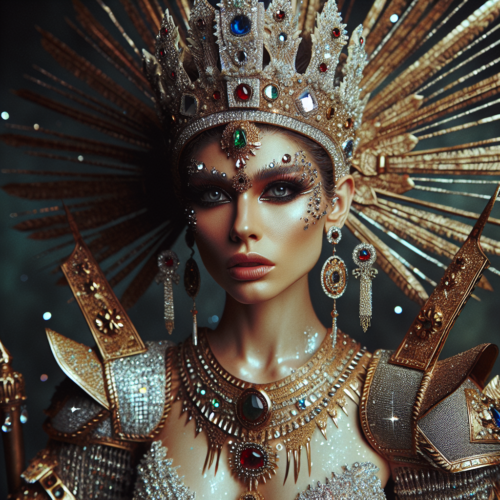Inanna stands as a central figure in Mesopotamian mythology, revered across Sumer from its earliest days, with her primary worship hub in Uruk. She is the goddess of numerous aspects, including love, fertility, war, justice, and political authority. This makes her one of the most multifaceted deities of her time.
Inanna is the daughter of Ningal and an unknown father (either Anu, Enlil or Nanna) and the twin sister of Utu. Known to have had many lovers and ex-lovers, Inanna’s most well-known husband is Dumuzid. She is one of the Annunaki, recognized as one of the powerful deities in the Mesopotamian pantheon.
Her influence extended beyond Mesopotamia, impacting the depiction of deities in cultures such as the Greco-Roman, Phoenician, Elamite, Hittite, and Egyptian pantheons. She shares similarities with figures like Aphrodite, Astarte, Pinikir, Shaushka, and Isis.

Symbolism
Her attributes and roles are diverse, including both the essence of feminine allure and the vigor of martial prowess. Inanna is often portrayed as a youthful woman, embodying both beauty and strength. Her iconography is rich and symbolic, featuring elements like a reed knot, an eight-pointed star, lions, rosettes, and doves, each reflecting different facets of her divine responsibilities and her connection to the planet Venus.
Myths in which she features
- The descent to the Underworld: in which she tries to conquer Kur
- Enmerkar and the Lord of Aratta: a divine matron of this heroic King
- Gilgamesh epic: his divine enemy, after she fails to seduce our hero
- Inanna and the Huluppu Tree: trying to do some gardening, failing, but assisted by Gilgamesh
- Inanna and Shukaletuda: taking revenge on a gardener who wronged her
- A drinking competition with Enki: taking over civilization artefacts
- Taking command of the Heavens: the conquest of Uruk
- The mountain of Ebih: whom she destroys as he challenges her authority
Modern appearances
Books
- “Inanna: Queen of Heaven and Earth: Her Stories and Hymns from Sumer” This book is a significant modern translation and interpretation of the ancient stories and hymns of Inanna, providing readers with a direct connection to the Sumerian goddess through her myths and worship
- “Eruptions of Inanna: Justice, Gender, and Erotic Power” by Judy Grahn Judy Grahn’s book delves into the interpretation and retelling of eight stories about Inanna, exploring themes of justice, gender, and erotic power, and connecting these ancient narratives to contemporary politics and feminist movements
- Inanna: Queen of Heaven and Earth : Her Stories and Hymns from Sumer
- “Inanna’s Tears” by Rob Vollmar This graphic novel explores the epic story of Inanna, blending historical fiction with the rich mythology.
- “Descent to the Goddess: A Way of Initiation for Women” by Sylvia Brinton Perera This work uses the myth of Inanna’s descent to the underworld as a framework for exploring feminine psychology and spirituality
- “Into the Great Below: A Devotional for Inanna and Ereshkigal” by Galina Krasskova
This devotional book offers prayers, rituals, and meditations dedicated to the goddess and her sister
Video Games
